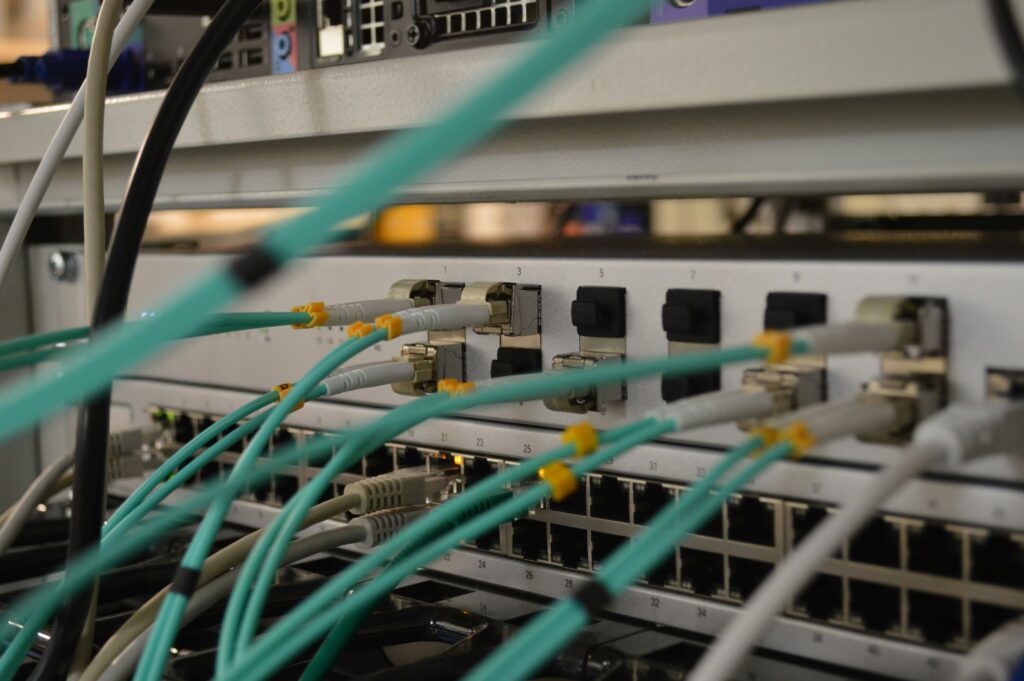When we talk wiring on our website we focus on Fiber Optic wiring and Voice and Data Wiring. Since you’re wiring for your business is the lifeline to connectivity, we wanted to take this a step further. To dig a little deeper into wiring options for your business. Follow along as we highlight three specific types of wiring services.
Network Wiring
Network wiring simply put refers to the cabling used to create a computer network. Another terminology is networking cable. “Networking cable is a piece of networking hardware used to connect one network device to other network devices or to connect two or more computers to share devices such as printers or scanners.”
This includes the following:
- Ethernet cables (e.g., Cat5e, Cat6, Cat6a, Cat7): Used for connecting computers, routers, switches, and other network devices.
- Fiber optic cables: Used for high-speed data transmission over longer distances.
- Patch panels and network jacks: Used to organize and connect network cables.
Low Voltage Wiring
Just as you would suspect from the name, low voltage wiring encompasses all wiring systems that operate at lower voltages than standard electrical wiring, typically under 50 volts.
Examples of when Low Voltage Wiring can be used:
- Network wiring: As mentioned above.
- Audio and video cabling: For speakers, and TVs.
- Security system wiring: For cameras, alarms, and sensors.
- Telecommunications wiring: For phone lines and intercoms.
Bulk Distribution
When discussing wiring needs, the topic of bulk distribution might arise. This refers to distributing data to multiple locations or end-users from a central point. Methods of distribution can include traditional copper cabling, Fiber Optic, or wireless distribution.
Advantages include:
- Cost-Effective: Often cheaper to implement, as wiring can be installed from Intermediate Distribution Frames (IDFs) and reduce the amount of long cable runs.
- Simplicity: Easier to deploy and maintain in some cases.
- Flexibility: Can be quickly adapted. And additional workstations can wire back to their closets IDF.
As wiring discussions go, the factors that will determine the route your business takes can depend on the size of your infrastructure, the desire to design for growth, required bandwidth, and cost. Are you ready to talk about business wiring options?

Resources: Wikipedia Networking Cable
